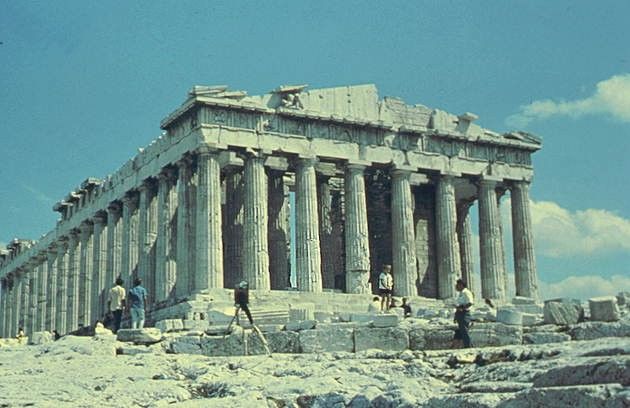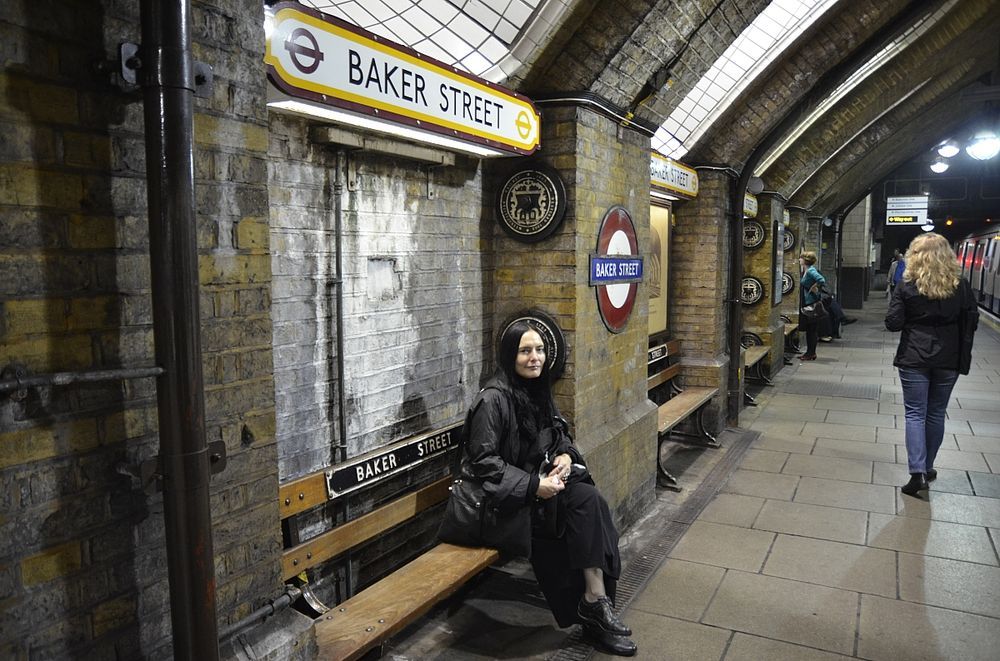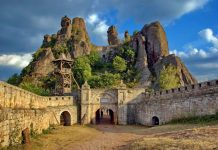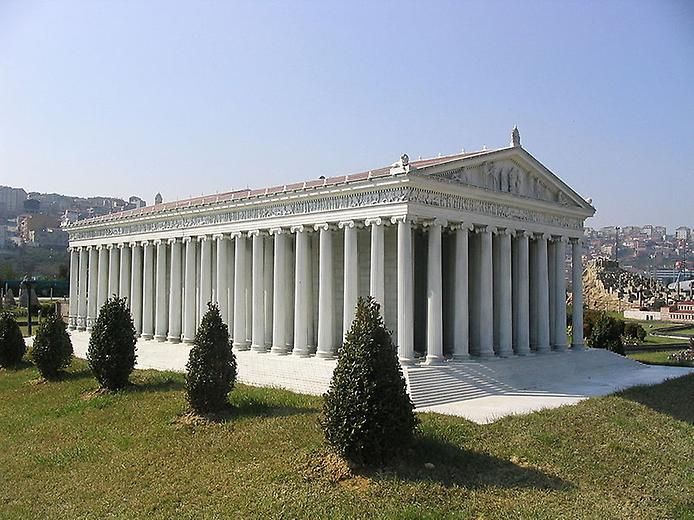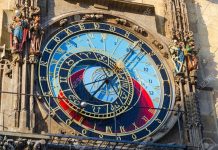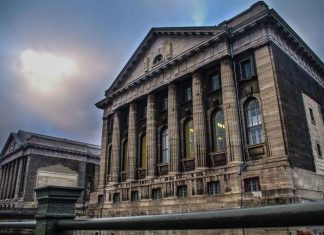The Temple of Artemis in Ephesus, one of the most beautiful wonders of the ancient world, unfortunately, has not survived to this day. The history of the temple dedicated to the goddess of fertility and the twin sister of Apollo is full of events and famous characters. The notoriety and the common name of Herostratus is associated with this architectural monument. In the IV century BC, Herostratus, not distinguished by special talents, decided to perpetuate his name by setting fire to the most beautiful temple of his time. In this article we will try to tell the story of one of the most majestic wonders of the world.
Artemis in ancient Greece was revered as the goddess of fertility, hunting and chastity. The cult of the always young virgin, who gives happiness in marriage and helps women in childbirth, was most clearly expressed in Ephesus. The city, located at that time on the shores of the Aegean Sea, was a major trading and shipping port. Its inhabitants have worshipped Artemis for centuries. Many scholars agree that the temple was rebuilt seven times. And the very first one was built by Amazons. However, the title of one of the wonders of the world was acquired by the project of the architect Hersifron.
Hersifron designed a majestic temple made of white marble. An innovative architectural solution of that time was the definition of a place for construction. Since Ephesus was located in a seismically active area, it was decided to start construction on the swamp. The architects assumed that this would protect the temple from frequent earthquakes. However, the swampy soil was not the most successful place for the foundation, since the swamp can easily absorb the building. Then, the cunning architect decided to fill the foundation pit with wool and coal. Such a “cushion” did not allow the building to sink.
Another problem during construction was the transportation of marble columns that decorated the temple around the perimeter. The inability to deliver the columns to the construction site due to the swampiness of the soil led Hersifon to a new ingenious solution. He came up with the idea to drive iron bars into the columns, on which large wheels were put on. The shafts were stretched out to the bulls, who pulled the columns to the construction site of the future wonder of the world.
Reconstruction of the Greek Temple of Artemis in Ephesus
The construction of the temple in Ephesus lasted about a hundred years.
The great architect Hersifron, who began to erect a monument in the marshes, died in the middle of the VI century BC, without waiting for the completion of construction. His son Metagenes continued the work, and then the architects Demetrius and Peony, who completed the construction in the V century BC.
The snow-white temple to the goddess Artemis, erected in the marshes, became the pearl of the city. Travelers and locals admired the marble structure. For many years, the temple, as befits all Greek places of worship of the gods, became the center of religious and secular life. Crowds of people gathered around him, who, after visiting and worshipping their goddess, discussed the latest city events, as well as predictions received from the oracles of the temple.
The evidence of contemporaries of the construction suggests that the temple in Ephesus was a grandiose building. It was about 50 meters wide, 105 meters long, and the height of the columns reached 20 meters. 127 columns installed in 8 rows, according to legend, were gifts of 127 kings. Although the official patron of the construction is considered to be the Lydian king Croesus. Inside, the temple was decorated with statues of the great sculptor Praxiteles, whose works have survived to this day in later Roman copies. Marble bas-reliefs of Scopas and paintings by famous Ephesian artists decorated the temple from ceiling to floor.
Speaking about the paintings of the temple, it is impossible not to mention Alexander the Great, the great commander and patron of the temple, after its next destruction. The fact is that on Alexander’s birthday, the first stone of the temple of Artemis was laid. When, after the arson of the temple in 356 by Herostratus, it had to be restored, Alexander, who saw this as a sign, offered his help to the inhabitants of Ephesus. To which he received the answer that it was not fitting for God to build temples for other gods. But in order not to anger the great conqueror, local artists painted a portrait of Alexander. The canvas was so plausible that the Romans, who came for a gift, paid the artist an untold price of 25 gold talents.
The wonderful creation of the great masters was not destined to stand for centuries. In 356 BC, a certain Herostratus, who tried to become famous at any cost, set fire to the temple of Artemis of Ephesus. Quickly flammable oils and incense, wooden floors and beams, easily succumbed to fire. The third wonder of the world could not be saved. The trial of the arsonist was immediate, and the execution was terrible. The inhabitants of Ephesus swore to forget the name of the scoundrel at any cost. In ancient chronicles, he is called “a kind of madman”, “insane”. However, such an idea led to a completely opposite effect. The name of Herostratus became a household name and has been preserved for centuries.
On the site of the burned-down, the construction of a new temple began. Alexander the Great nevertheless insisted on helping with the construction and appointed a Bureaucrat as the architect. The architect did not design a new temple, but almost exactly repeated the old building. The new place of worship of the goddess of fertility was several meters taller and decorated with a 10-meter statue of Artemis made of gold and ivory. And, like the old, new temple, it became part of the wonders of the world.
Before the arrival of Christians, the temple of Artemis was deeply revered. According to rumors, the inhabitants of Ephesus expelled the Apostle Paul, which brought trouble on both the city and the temple. Under Theodosius I, who forbade pagan cults and gods, the temple was closed. In 293, it was completely plundered by the Goths. When the marble cladding began to be dragged away to other buildings, the roof collapsed, thereby violating the unity of the structure. The columns fell, the whole structure plunged into the swamp. The place where the most beautiful Ionic Temple was erected was forgotten.
However, in 1869, the archaeologist Voodoo was lucky enough to find the remains of an ancient wonder of the world. Under its foundations in the XX century found the remains of the temple, set on fire by Herostratus. Now a restored column stands on the site of a once majestic architectural masterpiece. It is located in the city of Selcuk, in the south of modern Turkey.
